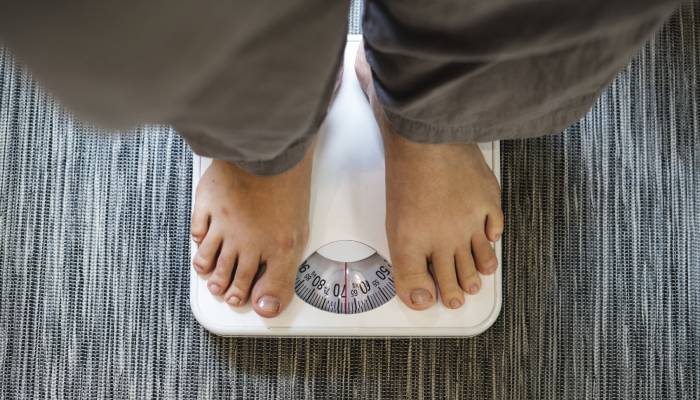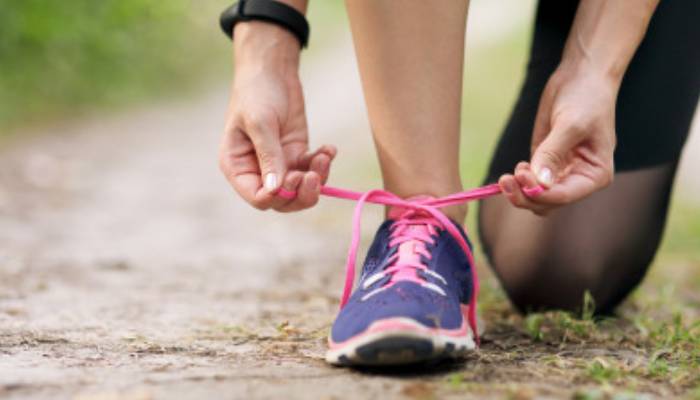One of the main gaits of locomotion among legged animals is walking (also known as ambulation). Typically, walking is slower than running and other rates. Walking is defined by an ‘inverted pendulum gait in which with each step the body vaults over the rigid limb or limbs.
This applies regardless of the usable number of limbs, including arthropods, walking with six, eight, or more limbs.
Walking for Health
The many benefits of walking in human life. Walking is easy, free, and one of the simplest ways to become more active, lose weight and become healthier.
Walking briskly, sometimes overlooked as a form of exercise, can help you build fitness, burn extra calories, and make your heart healthier.
For hours, you do not have to walk. There are lots of health benefits to a brisk 10-minute daily walk and count towards your recommended 150 minutes of weekly exercise.
Walking for heart health
Much medical research proves that exercising daily is good for fitness, really very good. Yet all of these experiments lump together different types of exercise to explore how the overall volume of physical activity impacts wellbeing. It is valuable science, but it does not prove that it is useful to walk, in and of itself.
Researchers found that walking decreased the incidence of coronary events by 30 percent, lowering the risk of dying by 32 percent, in a study that contained results from many well-done trials.
In men and women, these advantages were similarly durable. And at distances of only 50⁄2 miles a week and a pace as relaxed as around 2 miles per hour, security was apparent. The individuals who
walked longer distances, walked quicker, or both enjoyed the most excellent protection.
Walking for Your Good Health

A great way to improve or maintain your overall health is to walk. It can increase cardiovascular fitness, strengthen bones, decrease excess body fat, and boost muscle power and endurance for just 30 minutes every day.
Your risk of developing conditions such as heart disease, type 2 diabetes, osteoporosis, and some cancers can also be reduced. Walking is free and doesn’t require any special equipment or training, unlike some other forms of exercise.
To enhance your health, physical activity does not have to be vigorous or done for long periods. A 2007 study of inactive women found that compared to a non-exercising group, even a low level of exercise – about 75 minutes per week – significantly improved their fitness levels.
Walking is low-impact, requires minimal equipment, can be carried out at any time of day, and can be done at your own pace. Without worrying about the risks associated with some more vigorous forms of exercise, you can get out and walk.
For individuals who are overweight, elderly, or who have not exercised in a long time, walking is also a great form of physical activity.
Walking for fun and fitness is not limited to wandering around local neighborhood streets on your own. You can use different clubs, venues, and strategies to make walking an enjoyable and social component of your lifestyle.
Before you Start Walking

Any comfortable shoes or trainers that provide adequate support and do not because blisters will do that.
You could wear your usual work clothes with a comfortable pair of shoes if you’re walking to work and change shoes when you get to work.
You might want to take some water, healthy snacks, a spare top, sunscreen, and a sun hat in a small backpack for long walks.
You may want to invest in a waterproof jacket and some specialist walking shoes for more challenging routes if you start going for longer walks regularly.
What Are the Health Benefits of Walking?
The following benefits of walking in human life.
15 Benefits of Walking
1. Walking can improve your mood

The edge of a rough day may be blunted by a glass of wine or a square (or three) of dark chocolate. Still, going for a walk is a zero-calorie strategy that offers the same benefit, Dr. Joule says.
“Research shows that your nervous system is modified by regular walking so much that you will experience a decrease in anger and hostility,” she says, particularly when you go for a walk through some greenery or soak in a bit of sunlight.
During the colder months, when seasonal depression spikes, this may be especially helpful.
Finally, when you make your walks social, that interaction helps you feel connected with, say, your partner, a neighbor, or a good friend, says Dr. Joule’s, which can make you feel happier.
2. Burn calories and lose weight

Just like other forms of physical activity, such as running, swimming, or cycling, you are walking increases your heart rate, causing you to expend energy and burn calories. How many calories you burn depends on how quickly you walk, the terrain, and your weight for how long.
In the Journal of Strength & Conditioning Research, a 2020 study published found that participants burned an average of 89 calories walking 1,600 meters (about 1 mile). That was only about 20% lower than the 113 calories burned by other participants running the same distance.
And through the results of nine different walking studies published in the Annals of Family Medicine in this 2009 review, as a result of increasing their step count by between 1,827 and 4,556 steps per day, participants lost an average of 0.05 kilograms (0.1 pounds) per week.
Overall, that translated across all studies to a weight loss of about 5 pounds a year on average.
Walking calorie calculator
| Your Weight | Approximate calories per mile |
|
120 lbs |
85 |
|
140 lbs |
95 |
|
160 lbs |
105 |
|
180 lbs |
115 |
|
200 lbs |
125 |
benefits of walking
3. Improve digestion

The benefit of walking if you are currently praising coffee for keeping your digestive system going strong, be prepared instead to begin thanking your morning walk. That’s because, says Tara Aleichem
A physical therapist at the Cancer Treatment Centres of America, a regular walking routine can significantly enhance your bowel movements. “One of the very first things an abdominal surgery patient is required to do is to walk because it utilizes core and abdominal muscles, encouraging movement in our GI system.
4. Extend your life

A lowered risk of death, or longer life expectancy, has also been associated with walking. And the longer and easier you walk, the more your life expectancy increases.
The British Medical Association’s 2012 study monitored 27,738 participants aged 40 to 79 years Over 13 years and reported that participants who walked for more than an hour a day had a higher life expectancy than participants who walked for less than an hour a day.
Another 2019 research published in the British Journal of Sports Medicine looked at the correlation of walking at a quicker rate with variables such as real causes of mortality, cardiovascular disease, and cancer death, after 50,225 walkers for 14 years.
The researchers discovered that the faster you walk, the lower your average mortality risk. For instance, as opposed to walking at a slow speed, walking at a moderate pace resulted in a 20 percent decreased chance of overall mortality.
And walking at a fast or medium speed reduced the risk by 24 percent relative to walking at a moderate pace, at least 4 miles per hour.
5. Tone your thighs

One of the benefits of walking that the muscles in your thighs and legs will be improved while walking. Walk in a hilly field or on a treadmill with an incline to build up more power. Or with stairs to locate paths.
Trade-off walking for other cross-training sports such as jogging or cycling as well. To help tone and improve your leg muscles, you should also do resistance exercises like squats, lunges, and leg curls.
6. Increase Creativity

It’s also the best benefit of walking Moving will help clear your mind and assist you to think creatively.
A research that involved four tests compared persons as they were walking or seated trying to conceive about different ideas. Researchers found participants, mainly while walking outside, did better when walking.
Walking opens up a free flow of thoughts and is a convenient way to improve imagination and at the same time, get physical exercise, the researchers concluded.
The next time you’re stuck with a dilemma at work, try to launch a walking meeting with your friends.
7. Walking will Burn calories
The best benefit of walking is to burn your calories and lose weight. Walking can assist you in burning calories. It can help you maintain or lose weight by burning calories.
Your actual burning of calories will depend on several variables, including:
- Speed Walking
- Covered distance
- Terrain (you’ll burn more calories on a flat surface walking uphill than you’ll burn)
- The weight of yours
With a calorie calculator, you can determine your actual calorie burn. You can refer to this chart for a general estimate, too.
8. Increase energy levels

Walking increases blood supply across the body so that more blood can enter the large muscles in the legs as well as the head, providing oxygen and nutrients for fuel. According to Pete McCall, CSCS, exercise physiologist, personal trainer, and blogger, this is what makes you feel energized.
The amazing benefit of walking increases the energy level. Also, the volume of a kind of protein found in the brain, called a brain-related neurotrophic factor, has been shown to improve walking and other types of physical activity (BDNF).
Among different roles throughout the brain, BDNF could be responsible for how well you can remember, understand, and memorize.
“There is a correlation between a brisk walk and elevated levels of BDNF, which can help improve overall cognition, or thought processing,” McCall notes.
A 2009 study released in the journal Psychotherapy and Psychosomatic showed that after only 20 minutes of low to moderate physical activity, including cycling, for three days a week over six weeks, previously sedentary adults reported feeling more active and less tired.
And this 2018 report on sleep-deprived women between the ages of 18 and 23, published in the Physiology & Behaviour journal, showed that walking up and down the stairs at a medium to a moderate level for just 10 minutes was more energizing than drinking 50 mg of caffeine or around half a cup of coffee.
9. Improve Your fitness levels

Walking can be a fantastic exercise, It’s also beneficial for body fitness says MacPherson, whether you’re new to running or staying in the gym. (Based on your fitness levels, see her tips below to improve the burn you experience on your walk.) The relative ease of walking also makes it a fun thing to do with buddies!
10. help lower blood sugar

Walking is beneficial for lower-sugar patients. Also, short walks can offer significant advantages. One little research found that walking for just 15 minutes after each meal helps raise blood sugar levels, and it did so for more than a single 45-minute stroll! For busy citizens, that is fantastic news.
11. Boost immune system
It will also help prevent you from catching a cough, measles, or other immune-related disorders by walking briskly and consistently.
That’s how the number of white blood cells circulating in the blood is boosted by vigorous activity like walking. As part of the body’s immune system, these cells defend against bacteria and other diseases.
One of the benefits of walking boosts your immune system. A 2014 research published in the World Journal of Experimental Medicine of 800 young adults over six years found that white blood cell levels improved dramatically after only five minutes of exercise.
And the flagship publication of the American College of Sports Medicine published this 2006 report, which measured the white blood cell count of 15 people directly after a 30-minute walk and for the same period after sitting down. A considerable rise in white blood cells was also discovered.
A smaller percentage of sick days taken has also been associated with cycling. One thousand people were monitored through the flu season in a 2012 report published in the British Journal of Sports Medicine. Those who walked for 30 to 45 minutes a day at a reasonable level had 43 percent fewer sick days and fewer overall upper respiratory tract infections.
12. Eares joint pain
By warming up your muscles, walking will also help alleviate discomfort from discomfort in the body, making it easier to travel, according to McCall.
The motion will lift the temperature of the tissue, making it possible for muscles to lengthen and shorten, “The action can elevate tissue temperature making it easier for muscles to lengthen and shorten — as temperature increases, muscles move more efficiently, “as the temperature rises, muscles move more quickly.
Furthermore, walking will raise the levels in your brain of certain forms of chemicals, chemically known as neurotransmitters, which help your nervous system function efficiently. This may involve a neurotransmitter type that decreases pain.
“The first few minutes of walking might be uncomfortable, but after five to seven minutes the body warms up, blood is flowing, and neurotransmitter production increases helping reduce pain,” McCall says.
For this cause, in patients with chronic musculoskeletal pain disorders, that is, pain that affects the bones, joints, ligaments, tendons, and nerves, such as lower back pain, walking is often prescribed to relieve pain and decrease disability.
Patients who are hospitalized for chronic musculoskeletal pain in the back or limbs are often found to report less pain the longer they walk.
13. Builds stronger bones
The best benefit of Walking is to Build Strong bones of the body. Running is an exercise that brings weight. It causes your body to function against gravity and, particularly as you age, that’s good news for your bone health.
14. Help your Goals will start to seem more reachable
You would have developed a daily schedule before you become a regular walker, and you are more likely to stick with the exercise and carry on new healthier habits when you have a routine. Kim Evans, a personal trainer and frequent walker says, “I firmly believe that walking regularly can help you to accomplish other goals you set your mind to.
15. In last but not least, sleep better at night
You know you’ll sleep better at night if you work out regularly. That’s because Sleep naturally increases the effects of the sleep hormone melatonin.
A study by Sleep in 2019 found that postmenopausal women who do the physical activity of light to moderate intensity snooze better at night than those who are sedentary. Walking also helps to reduce stress and pain, which can trigger sleep disturbances.
Surprising Health benefit of walking for diabetes
Best Shoes for Walking

A low-cost and productive method of exercise is walking. The incorrect form of a shoe or walking movement, however, can cause foot or shin discomfort, blisters, and soft tissue injuries.
You are making sure that the shoes are secure, with sufficient support for the heel and arch. Take quick, light steps to ensure that your heel touches down before your toes. Walk on grass rather than concrete wherever possible to help absorb the effect.
Walking for 30 minutes a day
Aim to exercise as briskly as you can on most days of the week for at least 30 minutes to get the health benefits. ‘Brisk’ means you can still talk, but not sing, and you may be somewhat puffed up.
Moderate movements such as cycling carry little health danger but consult with the doctor before initiating any new physical or fitness regimen if you have a medical condition.
Make into your life Physical Activity
If it’s too difficult to exercise at one time for 30 minutes, do daily short bouts (10 minutes) three times a day and work up to longer workouts progressively. However, you would need to do physical exercise for more than 30 minutes per day if your goal is to lose weight. .
By beginning with smaller bursts of activity during the day and increasing these as your health increases, you can also accomplish this.
One of the most effective strategies to cope with weight loss and hold the weight off until it’s lost is often physical exercise incorporated into an everyday lifestyle schedule.
- Any tips for building walking into your everyday life include:
- Instead of a lift, take the stairs (for at least part of the way).
- Get off public transit and cycle to work or home one stops earlier.
- Walk to the nearest stores (don’t drive).
- Drive a puppy (or the dog of your neighbor).
Build walking part of your routine
Try to make exercise a habit, such as attempting to walk every day at the same time. Know, no matter what time of day you walk, you use the same amount of energy, so do what is most comfortable for you.
You will find that it would help to make it a daily thing to invite others to walk with you. Some people learn that it also makes it simpler to maintain an activity diary or journal.
While Walking, Wearing a Pedometer
A pedometer determines the number of steps you take. You will use it in a day to track the movement and equate it with other days or with prescribed levels. This could encourage you to move more. Ten thousand steps or more is the minimum amount of steps accumulated each day to obtain health benefits.
Now a day, every sample installs the best Application of the Pedometer in your Smartphone. You will not need to wear a pedometer.
Good strength for walking
There is no distinction in the amount of energy used for walking a kilometer or running a kilometer by specific individuals; it’s just that walking takes longer.
Every day, intend to cover a specified distance and watch how long it takes you to walk this distance. You will be able to travel a longer distance and use more calories as your health increases.
Walking quickly burns more kilojoules per hour than strolling, but until you’re breathless, that doesn’t mean you have to drive yourself. Speed yourself instead so that you can still talk. This basic rule of thumb ensures that under the target heart rhythm, which brings in health benefits, you walk comfortably.
Our bodies start to get used to physical exercise, so once you can increase your health levels, continue growing your strength. The speed of your walks can be improved by:
- Driving up the mountains
- Hand weights to walk on
- By including some fast walking, increasing the walking pace steadily
- Before returning to a moderate walking speed, the distance you walk rapidly increases.
- To walk for longer.
Make a joy for walking

Any tips to help make daily walking a pleasurable form of physical exercise include:
- Changing where you’re walking
- Walking with a puppy
- Take a stroll with mates
- Joining a club for cycling.
Make walking interesting
Here are ways to make your everyday walk enjoyable:
- Choose new paths, so you don’t get bored of seeing the same things if you want to stay close to home and limit your walking to neighborhood streets.
- Find one or two friends or family members to stroll with while you feel unsafe traveling alone.
- A stroll at all times of the day. The first thing to see in the morning is likely to be different from the sights in the afternoon or early evening.
- Travel to numerous reserves, park your car, and admire the views as you’re walking.
- Note the sky, the objects, the smells. Discover what’s happening around you.
Suggestions for safety while walking
Generally speaking, walking is a safe way to exercise, but watch out for unforeseen risks. Includes suggestions:
- Before beginning a new fitness routine, see your doctor for a medical check-up, especially if you are over 40 years of age, are overweight, or have not exercised in a long time.
- Make sure you read through the self-screening pre-exercise tool.
- Choose walks to suit your age and level of fitness. Warm up and cool down to ease in and out of your workout session with a steady, gentle stroll.
- To avoid blisters and shin splints, wear light, lightweight clothes, and suitable footwear.
- To stop sunburn, wear sunglasses, sunscreen, long sleeves, and a hat.
- To stop getting soaked if it rains, take waterproof clothes.
- Bring an umbrella or walking stick to ward off unleashed, unfriendly dogs.
- Check the weather forecast before bushwalking and take necessary safety precautions (for example, pack correct clothing).
- Look out for threats, such as cliff edges or big waves, in alpine or coastal areas.
READ THIS NEXT
What Happens If You Don’t Eat for a Week
Black Spot Inside Cheek & its causes
18 Amazing Dried Fruit Best for Weight Loss
10 Benefits of Drinking Milk At Night
Understand Hair Transplant After 10 Years

Comments are closed.